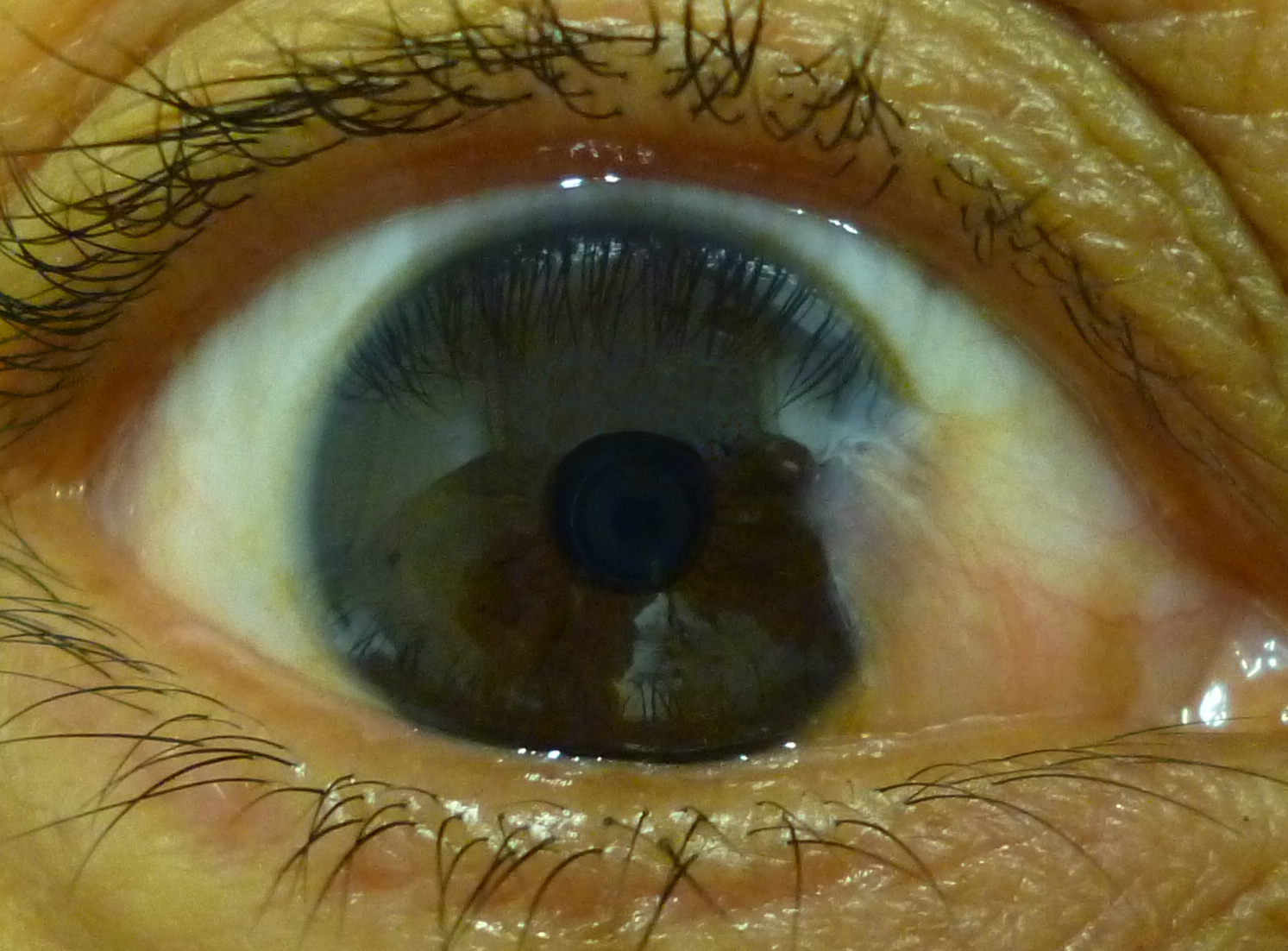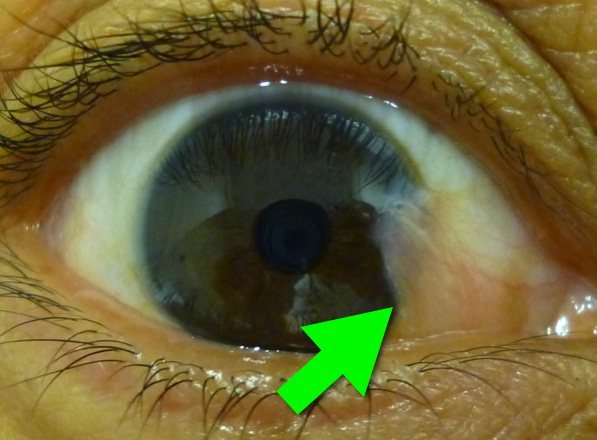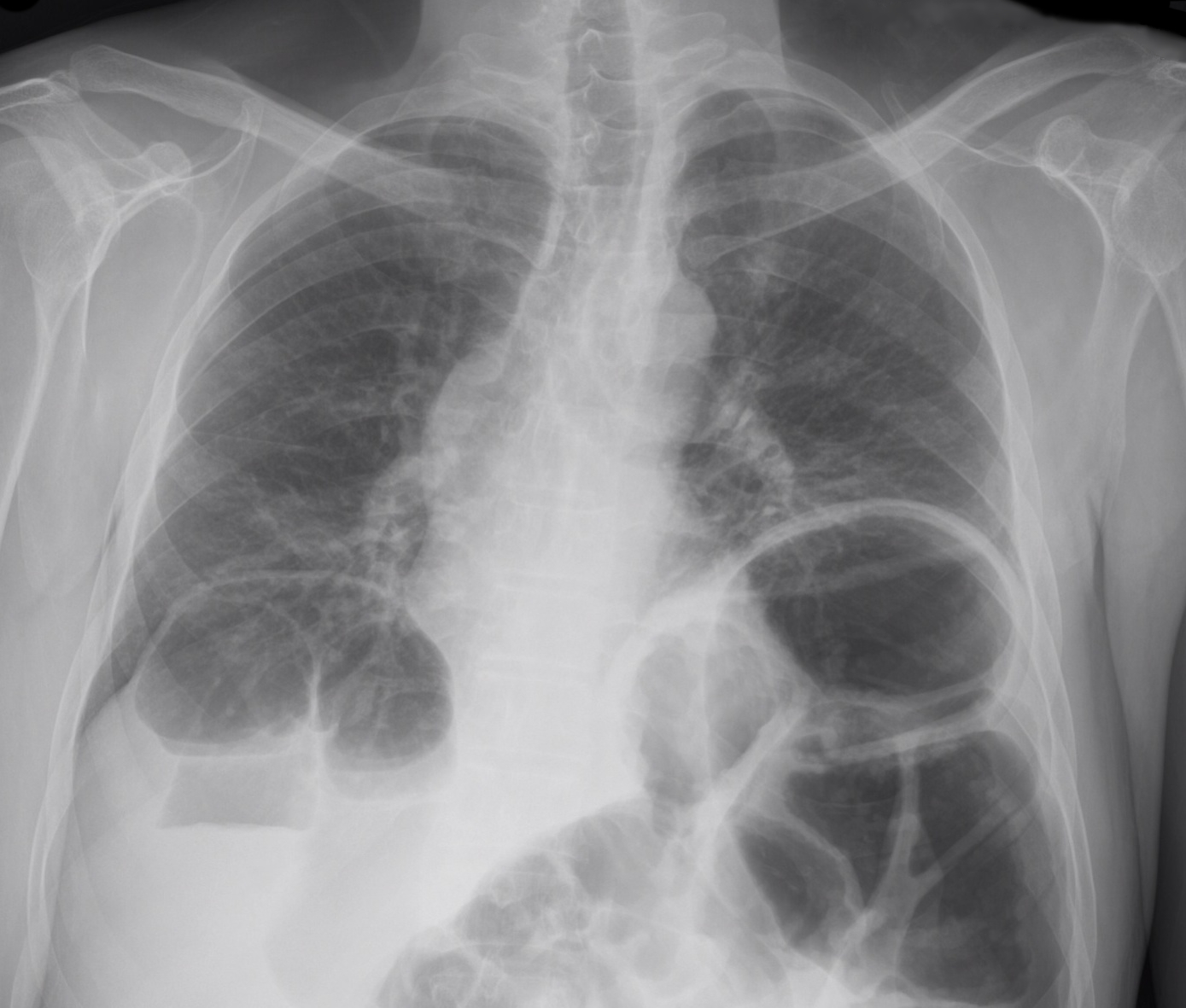Category: Toxicology
Keywords: lsd, alpha-methyltryptamine, AMT (PubMed Search)
Posted: 7/18/2013 by Fermin Barrueto
(Updated: 12/14/2025)
Click here to contact Fermin Barrueto
The internet has become a wealth of information and some books have now gained internet noteriety. A chemist and author of the book - TIKHAL: Tryptamines I Have Known and Loved is an excellent example.
Tryptamines include drugs like LSD and alpha-methyltryptamine (AMT). Vivid visual hallucinations and serotonin agonism, these drugs were glamorized by this author. He would synthesize a tryptamine and then "taste it". Take a look at the link below where he first describes the biochemical synthesis he performed then describes his dose response effect when he tried the drug.
If you run into a drug or slang term in the ED you are not familiar with, the website www.erowid.org will likely have the translation.
http://www.erowid.org/library/books_online/tihkal/tihkal48.shtml
Category: Critical Care
Posted: 7/16/2013 by Haney Mallemat, MD
Click here to contact Haney Mallemat, MD
COPD treatment guidelines (e.g., GOLD) recommend 10-14 days of steroid therapy following a COPD exacerbation to prevent recurrences; the supporting data is weak.
A recent noninferiority trial (here) compared patients with a severe COPD exacerbation who received either a 5-day course (n=156) or 14-day course (n=155) of prednisone 40mg.
The results were:
What you need to know:
Bottom-line: 5 days of prednisone may be as effective as 14-days for COPD exacerbations.
Follow me on Twitter (@criticalcarenow) or Google+ (+criticalcarenow)
Category: Visual Diagnosis
Posted: 7/15/2013 by Haney Mallemat, MD
Click here to contact Haney Mallemat, MD
46 year-old female presents with a headache. The following is seen on visual inspection of the eye. What's the diagnosis?


Pterygium
Six-word Summary: Cornea, benign, UV, supportive, surgery, and sunglasses
Bonus Pearl
As a new academic year begins, I will be sharing some amazing free educational online resources/links. These free materials are known as Free Open Access Meducation (or FOAMed) and for those familiar with FOAMed this is an emerging educational revolution. If you don't know what FOAMed is, read about it here and then read this. Updates will happen every Monday and will be known as #FOAM4yourDome
Follow me on Twitter (@criticalcarenow) or Google+ (+criticalcarenow)
Category: Cardiology
Posted: 7/14/2013 by Semhar Tewelde, MD
Click here to contact Semhar Tewelde, MD
Radiation therapy is frequently utilized in the management of numerous thoracic malignancies
Cardiovascular disease is now the leading cause of nonmalignancy death in radiation-treated cancer survivors
The spectrum of radiation-induced cardiac disease is broad
The relative risk of CAD, CHF, pericardial/valvular disease, and conduction abnormalities is particularly increased
Early identification of potential cardiac complications w/cardiac MR and echocardiography provides an opportunity for regular assessment and potentially improved long term mortality
Jaworksi C, Mariani J, et al. Cardiac Complication of Thoracic Irradiation. JACC Vol 61, No 23, 2013.
Category: Orthopedics
Keywords: ulnar nerve, entrapment (PubMed Search)
Posted: 7/13/2013 by Brian Corwell, MD
(Updated: 12/14/2025)
Click here to contact Brian Corwell, MD
Tests for distal ulnar nerve entrapment
Ask patient to hold a piece of paper between the thumb and the index finger
Normally this is a fairly simple task.
With an unlar nerve palsy, the patient will substitute with the FPL (flexor pollicis longus - median nerve innervation). This causes flexion of the thumb in order to maintain the grip since the adductor pollicis cannot be used. This causes thumb flexion rather than extension.
http://www.mims.com/resources/drugs/common/CP0042.gif
http://www.youtube.com/watch?v=yJTIhm1VfSI
Category: Pediatrics
Posted: 7/12/2013 by Rose Chasm, MD
(Updated: 12/14/2025)
Click here to contact Rose Chasm, MD
Risk stratisfication score introducted by Maden Samuel in 2002.
The Pediatric Appendicitis Score had a sensitivity of 1, speciificity of 0.92, positive predictive value of 0.96, and negative predictive value of 0.99
Signs:
Symptoms:
Laboratory Values:
Scores of 4 or less are least likely to have acute appendicitis, while scores of 8 or more are most likely.
Pediatric Appendicits Score. Samuel, M. J Pedia Surg.37:877-888. 2002.
Category: Toxicology
Keywords: salicylate, aspirin, toxicity, sodium bicarbonate (PubMed Search)
Posted: 7/10/2013 by Bryan Hayes, PharmD
(Updated: 7/11/2013)
Click here to contact Bryan Hayes, PharmD
In June 2013 the American College of Medical Toxicology (ACMT) released a Guidance Document on the Management Priorities in Salicylate Toxicity. Here are some key highlights:
The full document can be accessed here.
The Poison Review blog by Dr. Leon Gussow discusses the guidance document here.
Follow me on Twitter (@PharmERToxGuy)
Category: Visual Diagnosis
Posted: 7/8/2013 by Haney Mallemat, MD
Click here to contact Haney Mallemat, MD
3 year-old male develops rash 5 days after starting amoxicillin for acute otitis media. What's the diagnosis?

Erythema Multiforme
Erythema multiforme (EM) is a pruritic, erythematous, and blanchable maculopapular rash; it is serpiginous or targetoid in shape, with central clearing or pallor.
EM is generally symmetric, appearing on hands, feet, groin, and extensor aspects of legs and forearms.
It is classically associated with upper respiratory infections, medications, connective tissue diseases, and malignancies.
Treatment includes:
Habif, et al, Skin Disease, 3rd Ed. 2011
Follow me on Twitter (@criticalcarenow) or Google+ (+criticalcarenow)
Category: Cardiology
Posted: 7/7/2013 by Semhar Tewelde, MD
(Updated: 12/14/2025)
Click here to contact Semhar Tewelde, MD
Barthwal SP, Agarwal R, Sarkari NB et al. Diagnostic Significance of TI < T III and TVI > TV6 signs in ischemic heart disease . J Assoc Phys India 1993;41:26-7
Category: Pharmacology & Therapeutics
Keywords: pain, hydromorphone (PubMed Search)
Posted: 7/3/2013 by Bryan Hayes, PharmD
(Updated: 7/6/2013)
Click here to contact Bryan Hayes, PharmD
A recent, randomized study evaluated two approaches for treating acute pain in an inner-city ED.
Application to clinical practice: For most patients with acute, severe pain in the ED, start with hydromorphone 1 mg. It may be all the patient needs and can potentially avoid giving them extra opioid they don't need.
Chang AK, et al. Randomized clinical trial of the 2 mg hydromorphone bolus protocol versus the "1 + 1" hydromorphone titration protocol in treatment of acute, severe pain in the first hour of emergency department presentation. Ann Emerg Med. 2013 May 16. [Epub ahead of print]. PMID 23694801
Follow me on Twitter (@PharmERToxGuy)
Category: Pharmacology & Therapeutics
Keywords: insulin, metformin, sulfonylureas, repaglinide (PubMed Search)
Posted: 7/4/2013 by Ellen Lemkin, MD, PharmD
Click here to contact Ellen Lemkin, MD, PharmD
Diabetes. Pharmacist's Letter March 2013;29(3):13-4.
Category: International EM
Keywords: Hepatits C, Infectious Disease, International, Liver (PubMed Search)
Posted: 7/3/2013 by Andrea Tenner, MD
(Updated: 12/14/2025)
Click here to contact Andrea Tenner, MD
Background:
Infection with the Hepatitis C virus can result in mild to severe liver disease. Morbidity and mortality from Hep C is increasing the US--many of the 2.7-3.9 million persons with Hep C are not aware of their infection.
Pertinent Information:
- Hepatitis C is now curable for many patients
- Current treatment recommendations are a combination of medications (pegylated interferon plus ribavirin plus a protease inhibitor).
- Research in this field is very active--treatment is likely to change in the next 3-5 years.
- Risk reduction strategies to protect the liver (i.e. eliminating alcohol and Hep A and B vaccination) are also recommended.
Critical New Recommendation
As much of the disease burden is in the “Baby Boomers,” the CDC now recommends one time testing of all persons born between 1945 and 1965.
Bottom Line:
While emergency department management is focused on the treatment of acute complications of liver disease, it is also important to have all age appropriate patients follow-up for testing and treatment of Hepatitis C with their primary care provider.
Treatment for Hepatitis C Virus Infection in Adults [Internet]. Editors: Chou R, Hartung D, Rahman B, Wasson N, Cottrell E, Fu R. Rockville (MD): Agency for Healthcare Research and Quality (US); 2012 Nov. Report No.: 12(13)-EHC113-EF. AHRQ Comparative Effectiveness Reviews.
Recommendations for the identification of chronic hepatitis C virus infection among persons born during 1945-1965. Smith BD, Morgan RL, Beckett GA, Falck-Ytter Y, Holtzman D, Teo CG, Jewett A, Baack B, Rein DB, Patel N, Alter M, Yartel A, Ward JW; Centers for Disease Control and Prevention. MMWR Recomm Rep. 2012 Aug 17;61(RR-4):1-32
Category: Critical Care
Posted: 7/2/2013 by Haney Mallemat, MD
Click here to contact Haney Mallemat, MD
Hydroxyethyl starch (HES) is a colloid used for volume resuscitation in critically-ill patients.
Previous studies (click here) have compared crystalloids to HES during fluid resuscitation and have demonstrated that HES has an increased cost with more adverse effects. Adverse effects may include:
In the United States, the Federal Drug Administration published a warning on June 24th 2013 with respect to the use of HES in critically ill adult patients. Specifically, it warned about the use of HES in patients,
If a decision to use HES is made, the FDA warning advises to:
Bottom line: With an increased cost and evidence of harm compared to crystalloids, it appears the indications for use of HES are rapidly declining.
http://www.fda.gov/BiologicsBloodVaccines/SafetyAvailability/ucm358271.htm
Perner A., et al. Hydroxyethyl Starch 130/0.4 versus Ringer's Acetate in Severe Sepsis. NEJM. 2012 Jun 27.
MyBurgh, J. Hydroxyethyl Starch or Saline for Fluid Resuscitation in Intensive Care. N Engl J Med. 2012 Oct 17.
Category: Visual Diagnosis
Posted: 7/1/2013 by Haney Mallemat, MD
Click here to contact Haney Mallemat, MD
65 year-old male presents with nausea and diffuse abdominal pain, 3 days after knee replacement surgery. What's the diagnosis?

Adynamic ileus
Risk factors include
Imaging reveals distention of both large and small bowel without a transition zone, which differs from a small or large bowel obstruction. Such cases can be difficult to differentiate clinically from one another, so physicians often rely on imaging, specifically CT scanning to define a discrete obstruction versus an ileus.
References
1. Hayden and Sprouse, Bowel Obstruction and Hernia, Med Clin N Amer 29 (2011) 319-345
2. American College of Radiology, Suspected Small Bowel Obstruction, ACR Appropriateness Guidelines, rev. 2010
Follow me on Twitter (@criticalcarenow) or Google+ (+criticalcarenow)
Category: Cardiology
Posted: 6/30/2013 by Semhar Tewelde, MD
(Updated: 12/14/2025)
Click here to contact Semhar Tewelde, MD
Kini A, Baber U, et al. Changes in Plaque Lipid Content After Short-Term Intensive Versus Standard Statin Therapy. JACC. Vol. 62, No. 1, 2013
Category: Orthopedics
Posted: 6/29/2013 by Michael Bond, MD
(Updated: 12/14/2025)
Click here to contact Michael Bond, MD
Sternal fractures
Brookes JG, Dunn RJ, Rogers IR. Sternal fractures: a retrospective analysis of 272 cases. J Trauma. Jul 1993;35(1):46-54. PMID 8331712
Category: Pediatrics
Keywords: NIV, intubation (PubMed Search)
Posted: 6/28/2013 by Mimi Lu, MD
Click here to contact Mimi Lu, MD
Category: Toxicology
Keywords: sotalol, torsade de pointes (PubMed Search)
Posted: 6/27/2013 by Fermin Barrueto
(Updated: 12/14/2025)
Click here to contact Fermin Barrueto
When reviewing a patient's medication list, there are always some that should catch your eye. Digoxin is one since we can measure it, has a low therapeutic index and elimination is effected when renal function is diminished. Another drug that should catch your eye is SOTALOL. Renally cleared and affected by even a minimally lower than normal magnesium. The toxic effect even at therapeutic levels is torsades de pointes.
One study, in a 736 bed hospital, showed 89% of patients prescribed sotalol were on an inappropriate dose due to renal function and an odds ratio of 3.7 increased re-admission rate at 6 months for the patients on the inappropriate dose of sotalol.
We can catch this in the ED. Involve your pharmacist, ED pharmacist or local toxicologist for dosing calculations.
Assessment of sotalol prescribing in a community hospital: opportunities for clinical pharmacist involvement. Finks SW, Rogers KC, Manguso AH. Int J Pharm Pract. 2011 Aug;19(4):281-6.
Category: International EM
Keywords: Pediatric, IFEM, guidelines, international (PubMed Search)
Posted: 6/26/2013 by Andrea Tenner, MD
(Updated: 12/14/2025)
Click here to contact Andrea Tenner, MD
General Information:
An estimated 70 children in the world die every 5 minutes-- 99% of these deaths are from developing countries, half in Sub-Saharan Africa , and two-thirds from preventable or easily treatable causes.
Area of the world affected:
One study examining the quality of hospital emergency care of 131 children in 21 hospitals in 7 developing countries found:
· 66% of hospitals did not have adequate triage; 41% of patients had inadequate initial assessment;
· 44% received inappropriate treatment and 30% had insuf cient monitoring.
· Frequent essential drugs, laboratory and radiology services supply outages
· Staffing and knowledge shortages for medical and nursing personnel
Relevance to the US physician:
The International Federation of Emergency Medicine (IFEM) used a consensus approach to develop the International Standards for Emergency Care of Children in Emergency Departments, published in July 2012.
· The standards covering initial assessment, stabilization and treatment, staf ng and training
· Guidelines for coordinating, monitoring and improving the pediatric emergency care are addressed
Bottom Line:
The IFEM International Standards for Emergency Care of Children provide an excellent resource for both clinicians and hospital managers in developing countries.
University of Maryland Section of Global Emergency Health
Author:Terrence Mulligan DO, MPH,FIFEM, FACEP, FAAEM, FACOEP, FNVSHA
--thanks and acknowledgments to Baljit Cheema, University of Cape Town and Stellenbosch University, South Africa
Lozano R, Wang H, Foreman KJ, Rajaratnam JK, Naghavi M, Marcus JR, et al. Progress towards Millennium Development Goals 4 and 5 on maternal and child mortality: an updated systematic analysis. Lancet 2011;378(9797):1139–65.
[1] You D, Jones G, Hill K, Wardlaw T, Chopra M. Levels and trends in child mortality, 1990-2009. Lancet 2010;376(9745):931–3.
[1] Cheema B. International standards of care for children in emergency centres – do they apply to Africa? African Journal of Emergency Medicine (2013) 3, 50–51
[1] Nolan T, Angos P, Cunha AJ, Muhe L, Qazi S, Simoes EA, Tamburlini G, Weber M, Pierce NF. Quality of hospital care for seriously ill children in less-developed countries. Lancet 2001 Jan 13;357(9250):106–10.
[1] International Standards for Emergency Care of Children in Emergency Departments. Full Document Available from: http://www.ifem.cc/Resources/PoliciesandGuidelines.aspx
Category: Critical Care
Posted: 6/25/2013 by Mike Winters, MBA, MD
(Updated: 12/14/2025)
Click here to contact Mike Winters, MBA, MD
CVP and Fluid Responsiveness
Marik PE, Cavallazzi R. Does the central venous pressure predict fluid responsiveness? An updated meta-analysis and a plea for some common sense. Crit Care Med 2013:41:1774-1781.
